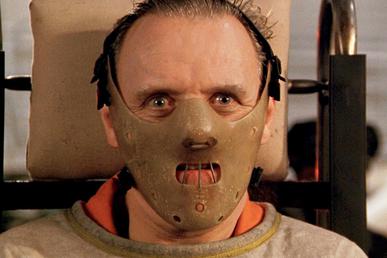There’s probably a lot that could be said about the average movie or horror book monster that hasn’t been said before. I myself haven’t been big on writing horror until fairly recently–I primarily read horror. Since devouring the entire Stephen King bibliography in high school I’ve found that most of my horror consumption has been through mediums other than books: horror films.
Even for a time, I was afraid of something as simple as the “My Favorite Things” song from A Sound of Music because little me misheard “when the dog bites” as “when the door bites”, so I didn’t like the song. A biting door is too scary! What makes a monster so terrifying?
Re-reading my favorite selection of Stephen King’s bibliography and exploring new horror writers brings to mind what it is that makes horror “horror.” What is it about the horror genre that draws readers to it?
For younger readers, certainly, it is the exploitative nature that draws many. Like many other teenagers, I was drawn to Chuck Palahiunik’s classic Fight Club, which naturally exposed me to his other fiction. Naturally, that led me to discover his infamous short story “Guts” from the anthology collection Haunted. Suffice to say, the shocking nature and subject matter seemed so inappropriate to discover on a church mission trip. Naturally, I shared it with everyone else.
But “Guts” features no monster, save perhaps, the horny teenage narrator who inadvertently condemns himself to his fate. Stephen King’s IT is the classic monster story of recent history: a group of pre-teens who discover a terrible, terrible child-eating monster and defeat it must do the same again as adults in their early-thirties.
I first read IT as a sophomore in high school when I was discovering a love of the horror genre, thanks to my mom who also read Stephen King in her youth and had a library to choose from. Re-reading this story now in my thirties is a completely different experience. Despite the obvious criticisms of the ending and the unmentionable scene ultimately removed from the recent movie adaptation, King is still undoubtedly a master of the genre. The original monstrosity of a novel doesn’t just speak of a group of Losers; it speaks of the history of a small town in America haunted by unspeakable violence every twenty-seven years.
Monsters of the Unknown

Monsters of the unknown live under the bed and in the darkness out of the corner of your eye. They are the monsters your parents told you about, the manananggal of the Philippines, the vampires, the Wendigo. These monsters are part of the oldest myths and legends across the world and encompass hundreds if not thousands of unique forms shaped by the culture.
More often than not, these monsters are shaped by the fears, the desires, and the customs of culture. Native American author Stephen Graham Jones’ The Only Good Indians follows four Blackfeet Native Americans who are haunted by an elk they killed during a botched hunting expedition, providing not only gruesome images and tension, but also providing commentary and insight into the community. Who is the monster and who is the man?
Monsters of Warped Reality

Although Pennywise from IT takes the form of a clown while really being a devourer of worlds from the greater Stephen King universe, his clown form falls under warped reality. Monsters in this category take the appearance of the familiar, perhaps even childish in nature, and add elements of horror. A demented clown, a doll, a haunted car, even a place such as Constance in Monster House can all be horrific under the right writer.
Real life is not always kind. Tragedy can hit us in the most horrific and unexpected way and turn even the most innocent of things into a terrible reminder of our fragile humanity. These unexpected monsters can stare at us through the eyes of the uncanny valley, halfway between human and inanimate. When you look at the eyes of a crackled old doll with a vacant expression, or be unnerved by the animatronics of the popular Indie video game Five Nights at Freddies, what is it that scares you so?
Much of the horror comes from the idea that many of these objects, things, or people are part of a safe space, part of the nursery in which you grew up. They are objects of comfort or everyday use–and the betrayal hurts more than anything.
Monsters of Self

The most horrifying category is when humans become the monsters. It is my favorite form of monster. Goblins and ghouls and mythological creatures are all good fun, but exploring the depravity of human nature will always be popular not just in the horror genre.
Annie Wilkes is a famous example from Stephen King’s Misery, one of my favorite classic Stephen King novels. She is what many of us are: the ultimate fan girl. But her fanaticism creates a prison for romance writer Paul Sheldon, and his desire to escape vs Annie’s desire to keep her favorite character alive creates a tense situation. Even today we hear stories of fanatical fans who stalk celebrities and threaten spouses under the delusion that they will someday marry.
Human depravity will always manage to surprise us–the more you dig into true crime the more you realize that humans are the ultimate monsters. The horror genre becomes a mirror, a place to peer into the dark void and see what lies in the darkest of human minds.
Great modern horror has monsters that fall into one or more of these categories. Of course, there are many more types and many more ideas horror has and will explore. There are new ideas every day, and I can’t wait to read what horror comes next for the rest of 2021 and beyond.
Happy Halloween!
